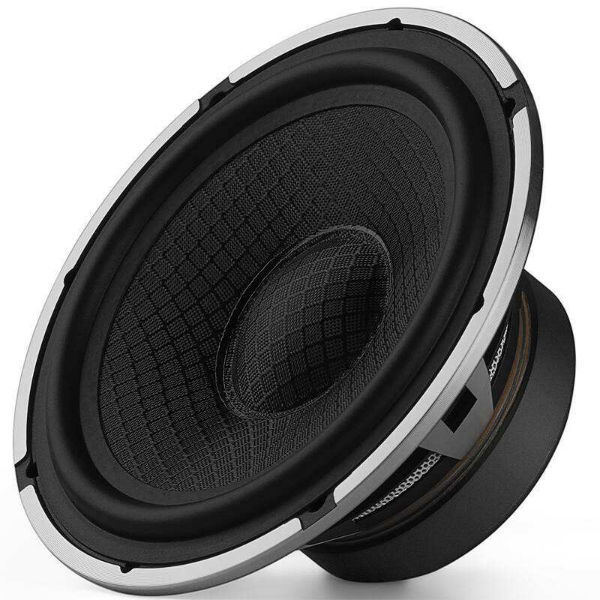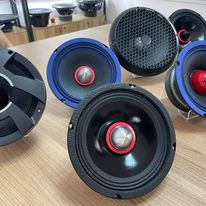
In 1861, the German inventor Reiss invented the telephone with the world’s first built-in loudspeaker. Then the loudspeaker continued to evolve, from a simple telephone receiver to a tool for workers to enjoy multimedia content. Compressed air speakers and excitation moving coil speakers came out one after another, and were eventually replaced due to various defects. They were replaced by permanent magnet moving coil speakers that have become the absolute mainstre
Today we are going to discuss several major factors that affect the sound quality of permanent magnet moving coil speakers. Before discussing, let’s briefly familiarize ourselves with its sounding principle. The permanent magnet moving coil speaker is mainly composed of a permanent magnet, a coil and a diaphragm. When the current passes through the coil, the coil has a magnetic force. This magnetic force will generate repulsion or attraction between the permanent magnet and the direction of the current, thereby driving the diaphragm. , and then the sound is transmitted to our ears through the air, the frequency of vibration controls the pitch, and the amplitude of vibration affects the volume.
01. The diaphragm is the basis for determining sound quality

There are many factors that affect the dynamic sound, the most basic of which is the size and material of the sound unit itself. In general, the larger the diameter of the moving coil, the higher the upper limit of sound quality, which is why many top-level speakers are very large. Diaphragms of different materials will have different stiffness, strength, density, Poisson’s ratio, damping and thermal expansion coefficient, which will lead to different sounds they form. Both stiffness and strength refer to the “hardness” of the material, and those with low stiffness Materials are prone to excessive deformation and damage to the diaphragm under vibration. Materials with low strength will be pulled and damaged under repeated stress. If a material has high stiffness and strength, it can be made as thin as possible. to be strong enough. Combined with low density, this material can be made into a very light diaphragm, which means power saving, easy to drive, and faster response to instantaneous changes in music signals, calmly facing intense music. Poisson’s ratio measures the degree of deformation of the diaphragm when the sound wave is transmitted on the diaphragm. The larger the Poisson’s ratio, the greater the deformation. Excessive deformation will cause multiple sound wave signals to mix together and cause distortion. Damping refers to the vibration of the diaphragm in the music. The ability to stop the vibration immediately after stopping, and the coefficient of thermal expansion determines whether the diaphragm can maintain its original volume and shape at high temperature so as to keep the sound quality unchanged. After all, most of the electric energy is converted into heat energy when the moving coil makes sound , high temperature is commonplace for diaphragms, paper and plastic diaphragms guarantee good performance at low cost, so they are widely used, mobile phones, laptops and most speakers basically use these two materials as vibration Diaphragm, however, there are also high and low diaphragms. The paper diaphragm formula of high-end speakers will be stronger in some performance indicators. If the cost is increased and the material and processing method are selected, metal can also become an excellent diaphragm material. It is as susceptible to moisture as paper, and it is also more rigid and stronger than plastic. The best performance of the metal diaphragm is the beryllium diaphragm, which has almost the strongest performance. The fly in the ointment is that the cost of beryllium is extremely high, and there It is toxic and difficult to process, so beryllium diaphragm (non-beryllium-plated) speakers are very expensive. In addition to paper, plastic and metal, some diaphragms use materials such as ceramics, wood or synthetic fibers.
02. Cabinet design

The design of the cabinet has a great influence on the sound quality of the speaker. Good cabinet design can provide stable sound output, minimize problems such as resonance and distortion, and can enhance the clarity and sense of space of the sound. Regardless of whether it is a mobile phone or a speaker, the speaker is placed in a cavity. If the speaker is cut out and energized to play songs, we will not hear anything, because the back of the speaker will also produce sound, and the sound wave is opposite to the front, causing the sound to cancel. To use a cavity to trap reverse sound waves, the volume, material, and internal structure of the wall have a great influence on the sound. If you plan to buy a speaker, you must first consider the material and internal structure. For the best sound quality, the cabinet should be heavy enough and rigid enough, so that the cabinet will not be easily affected by the outside to cause sound. At the same time, the natural frequency of the cabinet material is the best. Do not use the same frequency as the speaker. If they are the same, resonance will occur. Resonance will cause the speaker to have an abnormally large amplitude and cause sound distortion. Common cabinet materials are wood, plastic and metal. Plastic is cheap and has high plasticity. It is commonly used in Bluetooth. Speakers and small desktop speakers, this kind of speakers generally do not pay attention to sound quality. Although metal is heavy and hard enough, it is easy to generate resonance, which is not the most ideal material. Wood has a lower chance of resonance and looks more high-end, so it is the most popular. Welcome, wood is also divided into low-end composite boards and high-end (performance) solid wood, glass, stone and other materials are also used as examples of speaker cabinets, but due to the high processing difficulty, the sound effect is not necessarily good, so it is very difficult. Rare, from the perspective of internal structure, speakers can be divided into many types, the most common two are closed and inverted, closed is a completely closed box, inverted is the surface of the speaker is opened Hole, if you look in from the opening, you will find a pipe extending in. After the reverse sound wave from the back of the speaker is reflected in the box, it will pass through the inverter tube in the form of “forward sound wave” from the opening. , if the design is reasonable, the inverted speaker can achieve better bass effect and higher sensitivity in a smaller volume, so the inverted type is more favored by medium and small volume speakers, but the other parameters are exactly the same Under normal circumstances, the response speed of the inverted speaker to the instantaneous change of music is slightly slower than that of the closed speaker
The number and position of the speakers also have a great impact on the sound quality. To give a simple example, in general, a single-speaker phone is not as good as a dual-speaker phone, and a phone with two front speakers is better than a phone with side speakers. The sound quality here is mainly It is reflected in the two aspects of sound surround and volume, which is also applicable to speakers, but the multi-speaker of the speaker is not only for the enhancement of surround feeling and volume, but also to improve the sound quality of specific frequency sound. If there are special requirements for specific frequency , multi-speaker is a good choice,
03. Environmental factors

The location and environment of the speaker also have an impact on the sound quality performance. They may affect the reflection and refraction of sound, causing problems such as resonance and interference. Therefore, factors such as the size, shape, and acoustic environment of the room need to be considered when selecting speakers.
